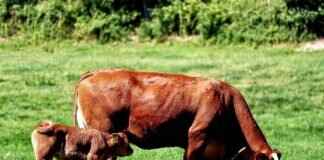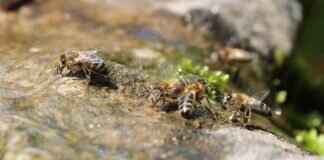This article explores the growing trend of jumping spiders as pets, discussing their unique characteristics, care requirements, and why they are becoming increasingly popular among arachnid enthusiasts.
Understanding Jumping Spiders
Jumping spiders, part of the family Salticidae, are fascinating creatures that have captured the hearts of many pet owners. These spiders are renowned for their impressive jumping abilities, which they use to catch prey and navigate their environment. With over 6,000 species identified worldwide, jumping spiders exhibit a variety of colors and patterns, making them visually appealing. Their keen eyesight, aided by their large forward-facing eyes, allows them to detect movement and assess distances accurately, which is critical for their hunting techniques.
Behaviorally, jumping spiders are curious and active, often engaging in playful antics that can be entertaining to observe. Unlike many other spider species, they do not rely on webs to catch food; instead, they actively hunt down their prey, which typically consists of small insects. This active hunting style, combined with their intelligence, makes them a unique addition to the pet world.
Why Choose a Jumping Spider as a Pet?
The appeal of jumping spiders as pets lies in their charming personalities and relatively low maintenance needs. Unlike traditional pets such as cats and dogs, jumping spiders require minimal space and are easy to care for. Their small size allows them to thrive in compact enclosures, making them ideal for urban dwellers or those with limited space.
Another reason for their rising popularity is their unique behaviors. Jumping spiders exhibit a range of interesting behaviors, from courtship displays to playful interactions with their environment. Their inquisitive nature allows them to engage with their owners, providing a rewarding experience for those willing to observe and interact with them. Furthermore, they are less likely to trigger allergies compared to furry pets, making them suitable for a broader audience.
Common Species of Jumping Spiders
When considering a jumping spider as a pet, it’s essential to be aware of the various species available. Each species has its unique traits and care requirements. Here are a few popular species:
- Phidippus audax: Known as the bold jumping spider, this species is easily recognizable due to its vibrant colors and large size. They are known for their inquisitive nature and are relatively easy to care for.
- Salticus scenicus: Commonly referred to as the zebra jumping spider, this species is characterized by its striking black and white stripes. They are known to be very active and can often be seen jumping around their enclosure.
- Marpissa muscosa: This species is known for its unique appearance and adaptability. They are often found in gardens and can thrive in various environments.
Setting Up the Perfect Habitat
Creating an ideal living environment is crucial for the well-being of jumping spiders. A suitable habitat not only ensures their health but also allows them to exhibit their natural behaviors. A glass or acrylic enclosure with a secure lid is recommended to prevent escape. The size of the enclosure can vary, but a 5 to 10-gallon tank is often sufficient for a single spider.
Proper substrate is essential; a mixture of coconut fiber and peat moss provides a suitable base for burrowing and climbing. Additionally, incorporating various climbing structures, such as twigs or artificial plants, can enhance their habitat and encourage natural behaviors. Maintaining an appropriate temperature between 70°F to 80°F is vital for their activity levels and overall health.
Feeding Your Jumping Spider
Proper nutrition is key to keeping jumping spiders healthy. These arachnids primarily feed on live prey, with options including fruit flies, small crickets, and other insects. It’s essential to provide appropriately sized prey, as overly large insects can be intimidating and difficult for them to manage.
Feeding frequency can vary based on the spider’s age and size. Juvenile spiders may require feeding every other day, while adults can be fed every 3 to 5 days. It’s crucial to monitor their eating habits and adjust the feeding schedule accordingly to prevent obesity or malnutrition.
Handling and Interaction
While jumping spiders are not traditional pets, they can be handled with care. It’s essential to approach handling with a gentle touch and patience. Gradually acclimating your spider to your presence can help build trust. Always ensure your hands are clean and free of any chemicals before handling.
Building trust with your spider involves spending time near their enclosure and allowing them to explore your hand at their own pace. This can create a bond between you and your spider, enhancing the overall experience of pet ownership.
Health and Wellness of Jumping Spiders
Understanding common health issues and preventive care is crucial for pet owners. Regularly inspecting your spider for signs of illness, such as lethargy, discoloration, or lack of appetite, can help catch problems early. Maintaining a clean enclosure and providing a balanced diet are essential for preventing health issues.
Preventive care tips include ensuring proper humidity levels and avoiding overfeeding. Regularly cleaning the enclosure and replacing substrate can help maintain a healthy environment for your spider.
The Cost of Owning a Jumping Spider
Before purchasing a jumping spider, it’s essential to consider the costs involved. The initial purchase price can vary widely based on the species and where you buy it. On average, a jumping spider can cost between $10 to $50.
Ongoing care expenses should also be considered, including food, substrate, and any necessary supplies for habitat maintenance. Budgeting for these recurring costs ensures that you can provide a comfortable home for your new pet.
Where to Buy Jumping Spiders
Finding a reputable source for purchasing jumping spiders is crucial. Local pet stores often carry common species, but online retailers can provide a broader selection. When choosing between local stores and online options, consider factors such as availability, price, and the reputation of the seller.
Key factors to consider when selecting a source include the seller’s knowledge about the species, customer reviews, and return policies. Ensuring that you buy from a reputable source can help guarantee that you are getting a healthy and well-cared-for spider.
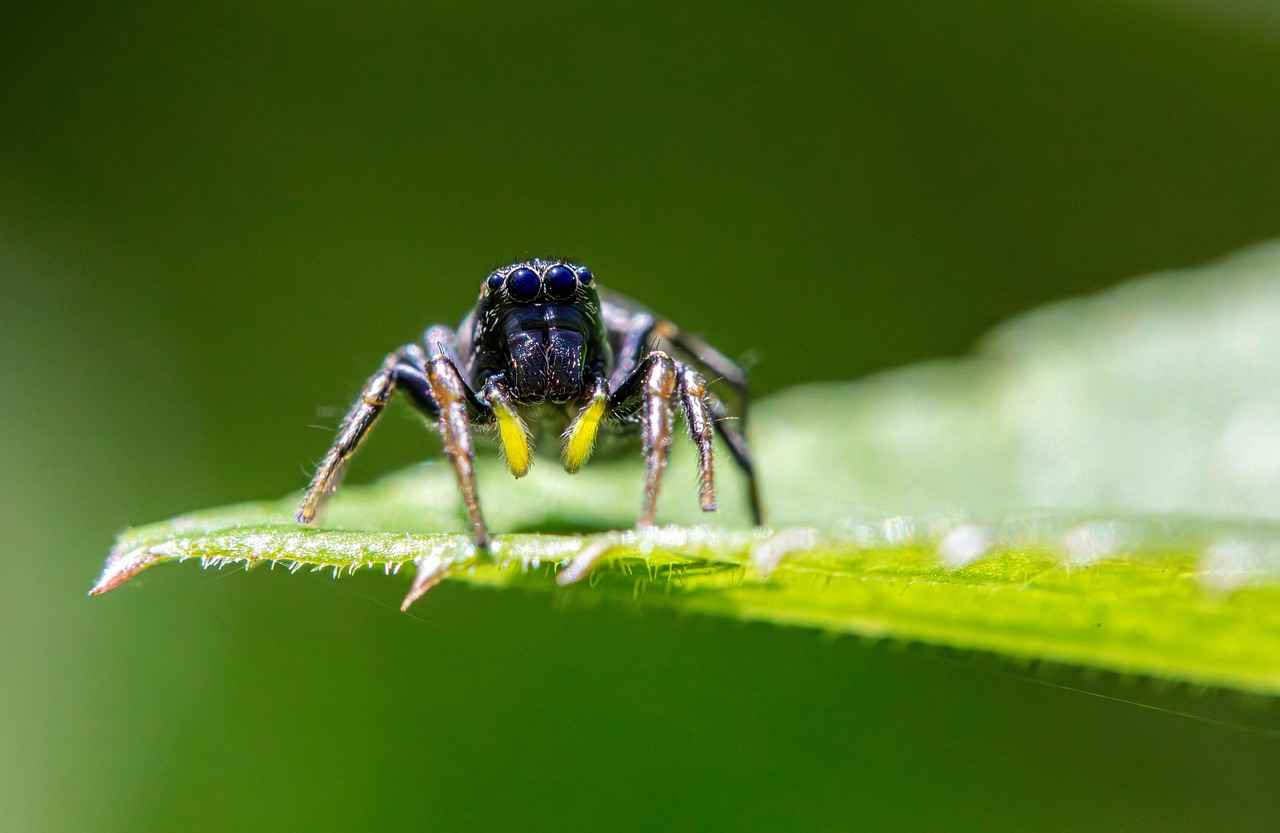
Understanding Jumping Spiders
Jumping spiders, scientifically classified under the family Salticidae, are a captivating group of arachnids that have garnered significant interest among both researchers and pet enthusiasts. These spiders are renowned for their exceptional jumping abilities and remarkable visual acuity, which set them apart from other spider species.- Physical Characteristics: Jumping spiders typically exhibit a compact body structure, with short legs and large eyes that contribute to their excellent vision. Their eyes are arranged in a unique pattern, which enhances their depth perception and allows them to spot prey from a distance.
- Behavioral Traits: Unlike many spiders that rely on webs to catch prey, jumping spiders are active hunters. They use their keen eyesight to stalk and pounce on their prey, which usually consists of insects. Their agile movements and ability to leap several times their body length make them formidable predators.
- Coloration and Patterns: The coloration of jumping spiders varies widely among species, ranging from vibrant hues to more subdued tones. This diversity not only makes them visually appealing but also serves as a form of camouflage, helping them blend into their surroundings.
Jumping spiders are primarily diurnal, meaning they are active during the day. This behavior allows them to take full advantage of their eyesight, as they hunt for food and engage in social interactions. Many species exhibit complex courtship rituals, where males perform elaborate displays to attract females, further showcasing their unique behaviors.
In terms of habitat, jumping spiders can be found in a variety of environments, from forests and grasslands to urban areas. They often inhabit places where they can easily access prey, such as on plants, walls, and even inside homes. Their adaptability to different environments is a testament to their resilience and survival skills.
When it comes to reproduction, female jumping spiders are known to be selective, often choosing mates based on their display behaviors. After mating, females lay eggs in silken sacs, which they guard until the spiderlings emerge. This parental care is relatively uncommon in the arachnid world and highlights the complex social behaviors of these fascinating creatures.
In conclusion, understanding the biology and behavior of jumping spiders provides insight into why they are becoming increasingly popular as pets. Their unique characteristics, coupled with their engaging behaviors, make them a captivating choice for those interested in arachnids. As we delve deeper into the world of jumping spiders, we uncover not only their intriguing lifestyles but also the essential care they require to thrive in captivity.
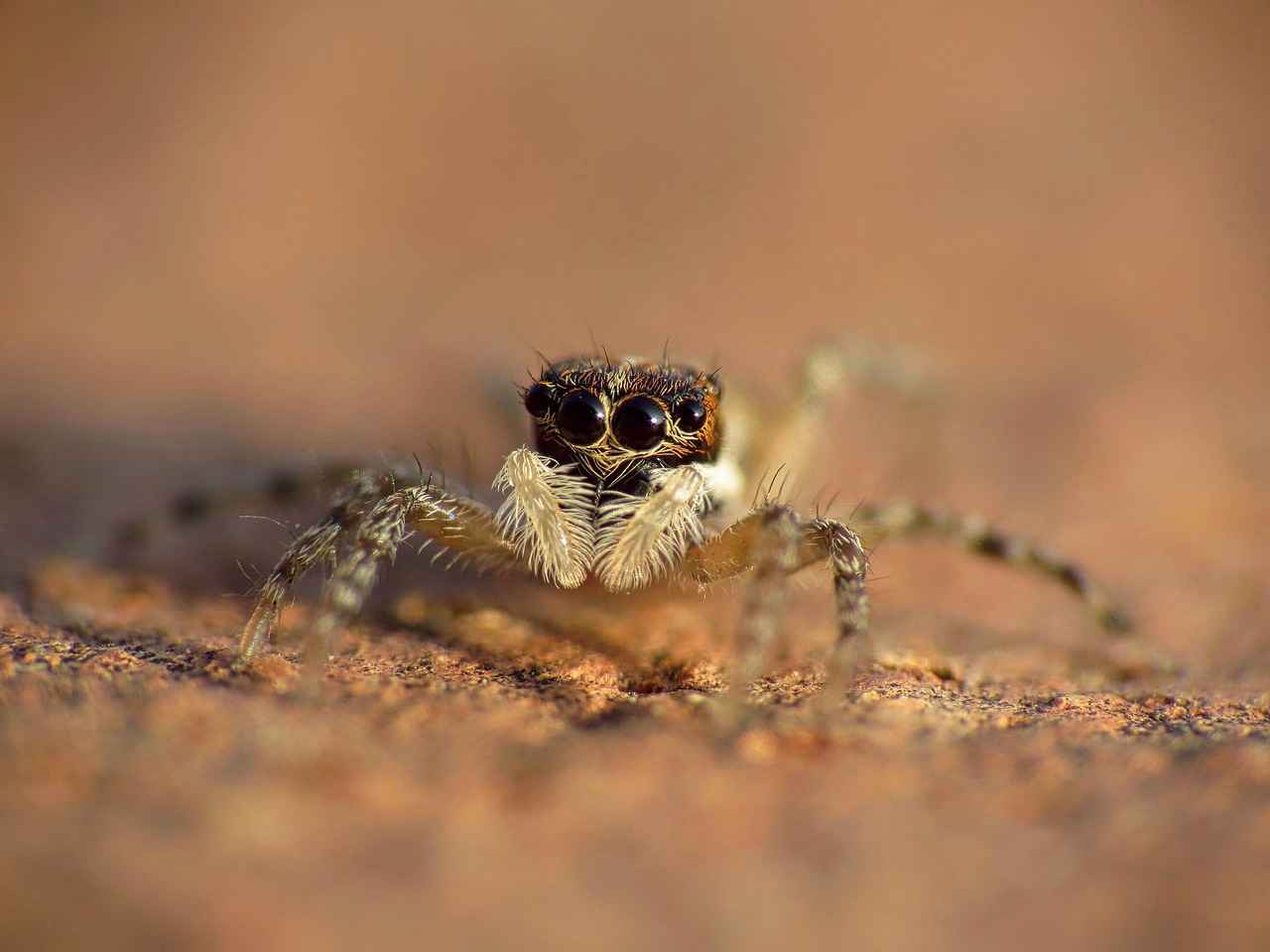
Why Choose a Jumping Spider as a Pet?
Jumping spiders, with their captivating behaviors and unique characteristics, are increasingly becoming the choice for pet enthusiasts. These remarkable arachnids belong to the family Salticidae and are known for their exceptional jumping abilities and keen eyesight. But what makes them stand out as pets? Let’s explore the reasons why jumping spiders are winning the hearts of many.
Low Maintenance Requirements
One of the most appealing aspects of jumping spiders is their relatively low maintenance needs. Unlike traditional pets that require daily walks, grooming, or extensive care, jumping spiders thrive in simple environments. They need a well-ventilated enclosure, some substrate, and a few climbing structures to mimic their natural habitat. Their diet mainly consists of small insects, which can be easily sourced from local pet stores or collected from the wild. This simplicity makes them an excellent choice for busy individuals or those new to pet ownership.
Unique Personalities
Jumping spiders are known for their engaging and curious personalities. They exhibit a range of behaviors that can be fascinating to observe. For instance, they often display a “hunting dance” when stalking prey, showcasing their agility and intelligence. Furthermore, they can recognize their owners, often responding to movement and showing signs of curiosity when approached. This interactive nature makes them not only pets but also companions that can provide entertainment and joy.
Educational Opportunities
Owning a jumping spider can also be an educational experience. These arachnids offer insights into the fascinating world of invertebrates, their behaviors, and their ecological roles. Observing their hunting techniques, social interactions, and growth can spark interest in biology and environmental science. For families, this can serve as a great opportunity to teach children about responsibility, empathy towards living creatures, and the importance of biodiversity.
Space-Efficient
Another advantage of keeping jumping spiders is their minimal space requirements. Unlike larger pets that need significant room to roam, jumping spiders can thrive in small enclosures. A simple terrarium or glass jar can serve as their home, making them perfect for individuals with limited living space, such as apartment dwellers. This compact nature allows enthusiasts to enjoy the wonders of pet ownership without the constraints of larger animals.
Variety of Species
Jumping spiders come in a multitude of species, each with its distinct appearance and traits. For instance, the bold jumping spider (Phidippus audax) is known for its striking coloration and personality, while the zebra jumping spider (Salticus scenicus) captivates with its unique markings. This variety allows pet owners to choose a species that resonates with their personal preferences, enhancing their overall experience.
Low Cost
In terms of financial investment, jumping spiders are generally more affordable than traditional pets. The initial purchase price can range from $5 to $30, depending on the species and seller. Additionally, ongoing costs such as food and habitat maintenance are relatively low. This affordability makes jumping spiders an accessible option for those looking to dive into the world of pet ownership without breaking the bank.
Conclusion
In summary, jumping spiders are emerging as popular pets due to their low maintenance needs, engaging personalities, educational potential, space efficiency, variety of species, and affordability. For anyone considering a unique and rewarding pet experience, these remarkable arachnids present an excellent choice. As the fascination with these creatures continues to grow, so too does the community of jumping spider enthusiasts, eager to share their experiences and knowledge with others.
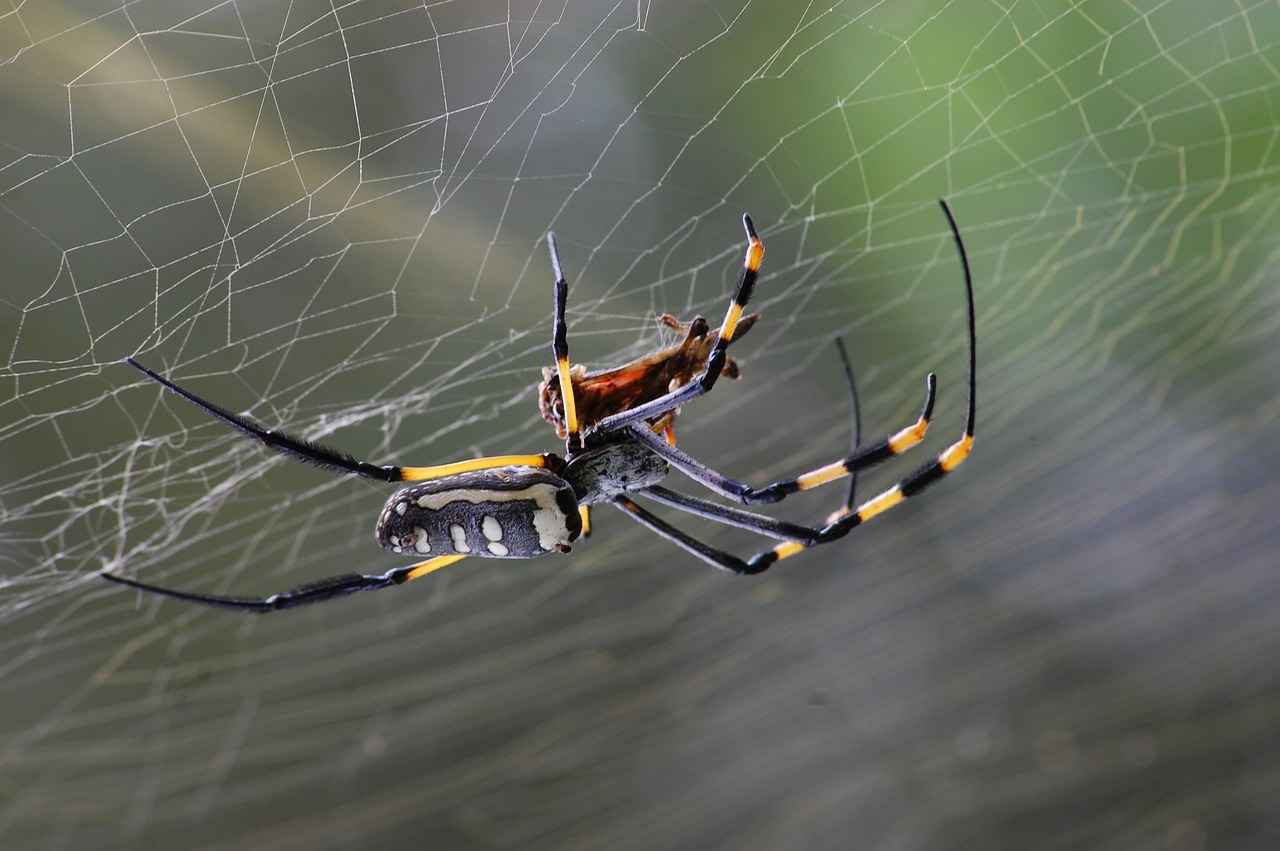
Common Species of Jumping Spiders
Jumping spiders are captivating creatures that have garnered a following among pet enthusiasts due to their unique characteristics and engaging behaviors. This section explores some of the most popular species available for sale, highlighting their distinct traits, care requirements, and why they are favored by arachnid lovers.
Jumping spiders, belonging to the family Salticidae, encompass a diverse range of species, each with its own fascinating attributes. Here are some of the most sought-after species among pet owners:
- Phidippus audax
Also known as the bold jumping spider, Phidippus audax is one of the most recognizable species due to its vibrant coloration and charismatic behavior. These spiders can be found in various habitats across North America. They are particularly known for their boldness; unlike many spiders that prefer to hide, Phidippus audax often exhibits curiosity, making them more interactive pets. They thrive in a well-ventilated enclosure with ample space for jumping and exploring. Their diet primarily consists of live insects, which helps maintain their health and vitality.
- Salticus scenicus
Commonly referred to as the zebra jumping spider, Salticus scenicus is celebrated for its striking black and white striped appearance. This species is often found in urban areas, where it can be spotted on walls and windows. Their small size and captivating looks make them a favorite among collectors. They are relatively easy to care for, requiring a simple habitat setup with a suitable substrate and hiding spots. Their diet mainly includes small flies and other insects, which they actively hunt.
- Marpissa muscosa
The Marpissa muscosa, or the tree jumping spider, is known for its remarkable ability to leap from branch to branch in trees. This species is characterized by its long legs and unique coloring, which helps it blend into its surroundings. They are primarily found in wooded areas and can be a bit more challenging to keep due to their need for a more complex habitat that mimics their natural environment. Providing climbing structures and a varied diet of live prey is essential for their health.
- Heliophanus cupreus
Known for its metallic sheen, the Heliophanus cupreus is a visually stunning species that captures the attention of many spider enthusiasts. This species is often found in grasslands and meadows, where it hunts for small insects. They are relatively small and require a simple habitat with plenty of light, as they are diurnal hunters. Their diet consists of small insects, and they are known for their agility and speed when capturing prey.
Each of these species offers unique traits and challenges, making them suitable for different types of pet owners. When selecting a jumping spider, it’s essential to consider not only their appearance but also their care requirements and compatibility with your lifestyle. Understanding the specific needs of each species will ensure a rewarding experience for both you and your new eight-legged companion.
Phidippus audax
, commonly known as the bold jumping spider, is an intriguing arachnid that captivates both enthusiasts and casual observers alike. This species, part of the Salticidae family, is renowned for its striking appearance and remarkable behavior. In this section, we will explore the distinctive features of Phidippus audax, its unique care requirements, and why it stands out among other jumping spider species.
One of the most notable characteristics of the bold jumping spider is its vibrant coloration. Typically, males exhibit a striking combination of black and iridescent green or blue hues, while females are generally more subdued in color, often displaying shades of brown or gray. This sexual dimorphism not only enhances their aesthetic appeal but also plays a role in mating rituals. The males perform elaborate courtship dances to attract females, showcasing their agility and vibrant colors.
Another distinctive feature of Phidippus audax is its large, forward-facing eyes, which provide excellent vision. These spiders possess eight eyes, with the central pair being particularly large, allowing them to detect movement with remarkable precision. This keen eyesight is essential for hunting, as they primarily feed on small insects such as flies, moths, and other arachnids. Their hunting strategy is fascinating; they do not spin webs to trap prey but instead rely on their exceptional jumping ability to pounce on unsuspecting victims.
When it comes to care requirements, Phidippus audax is relatively low-maintenance, making it an ideal choice for novice spider keepers. To create a suitable habitat, a small terrarium or enclosure with adequate ventilation is necessary. The enclosure should be equipped with climbing structures, such as branches or artificial plants, as these spiders are natural climbers. A substrate of coconut fiber or peat moss can be used to maintain humidity levels, which should be kept between 40% to 60% for optimal health.
Feeding your Phidippus audax is straightforward. It’s essential to provide live prey, as these spiders thrive on the challenge of hunting. Crickets, fruit flies, and small mealworms are excellent food choices. It’s advisable to offer prey that is approximately one-third the size of the spider to ensure they can catch and consume it easily. Feeding frequency can vary; typically, offering food every 2-3 days is sufficient, but this can be adjusted based on the spider’s activity level and size.
Another important aspect of caring for Phidippus audax is ensuring they receive adequate exposure to natural light. A light cycle of 12 hours of light and 12 hours of darkness will help mimic their natural environment and promote healthy behaviors. Additionally, maintaining a stable temperature between 70°F to 80°F (21°C to 27°C) is crucial for their well-being.
In summary, Phidippus audax is not just a visually stunning species; it also offers a unique pet ownership experience. With its fascinating hunting behavior, relatively simple care requirements, and engaging personality, the bold jumping spider is becoming a favorite among arachnid enthusiasts. Whether you’re a seasoned collector or a newcomer to the world of spiders, Phidippus audax is sure to impress with its charm and character.
Salticus scenicus
, commonly known as the zebra jumping spider, is a captivating species that draws the attention of both arachnid enthusiasts and casual observers alike. This spider is easily identifiable due to its distinctive black and white striped appearance, resembling the patterns of a zebra. In this section, we will delve deeper into the habitat, diet, and behavior of this remarkable creature.
The zebra jumping spider is predominantly found in a variety of environments, showcasing its adaptability. They are often spotted in urban areas, grassy fields, gardens, and even on the walls of buildings. These spiders prefer sunny locations where they can hunt effectively. They create small webs for shelter but are primarily active hunters, relying on their exceptional vision and agility to capture prey.
- Geographical Distribution: Salticus scenicus can be found across Europe, North America, and parts of Asia, often in temperate climates.
- Preferred Environment: They thrive in areas with abundant vegetation, as this provides both hunting grounds and hiding spots from predators.
- Microhabitats: Commonly, they inhabit areas with low-lying plants, grasses, and even rocky surfaces, allowing them to stalk their prey effectively.
The diet of the zebra jumping spider primarily consists of small insects, making them beneficial for pest control. They are known to hunt various prey, including flies, moths, and other small arthropods. Their hunting strategy is quite fascinating; they rely on their keen eyesight to spot potential meals from a distance before pouncing with impressive agility.
| Prey Type | Nutritional Value |
|---|---|
| Flies | High protein content, essential for growth and reproduction. |
| Moths | Rich in fats, providing energy for active hunting. |
| Small Ants | Good source of vitamins and minerals. |
The behavior of the zebra jumping spider is characterized by its inquisitive nature and complex social interactions. Unlike many other spider species, Salticus scenicus exhibits a degree of curiosity, often exploring their surroundings and engaging in playful movements. They are known for their unique courtship rituals, where males perform elaborate dances to attract females.
- Hunting Technique: Their hunting technique involves stalking and leaping towards prey, showcasing their remarkable jumping ability.
- Social Behavior: While generally solitary, they have been observed engaging in social interactions during mating seasons.
- Defensive Mechanisms: When threatened, they may freeze or retreat quickly to avoid predators.
In summary, the zebra jumping spider, , is a fascinating species that captivates with its unique appearance and behavior. Its adaptability to various habitats, diverse diet, and intriguing behaviors make it a subject of interest for both researchers and pet enthusiasts.
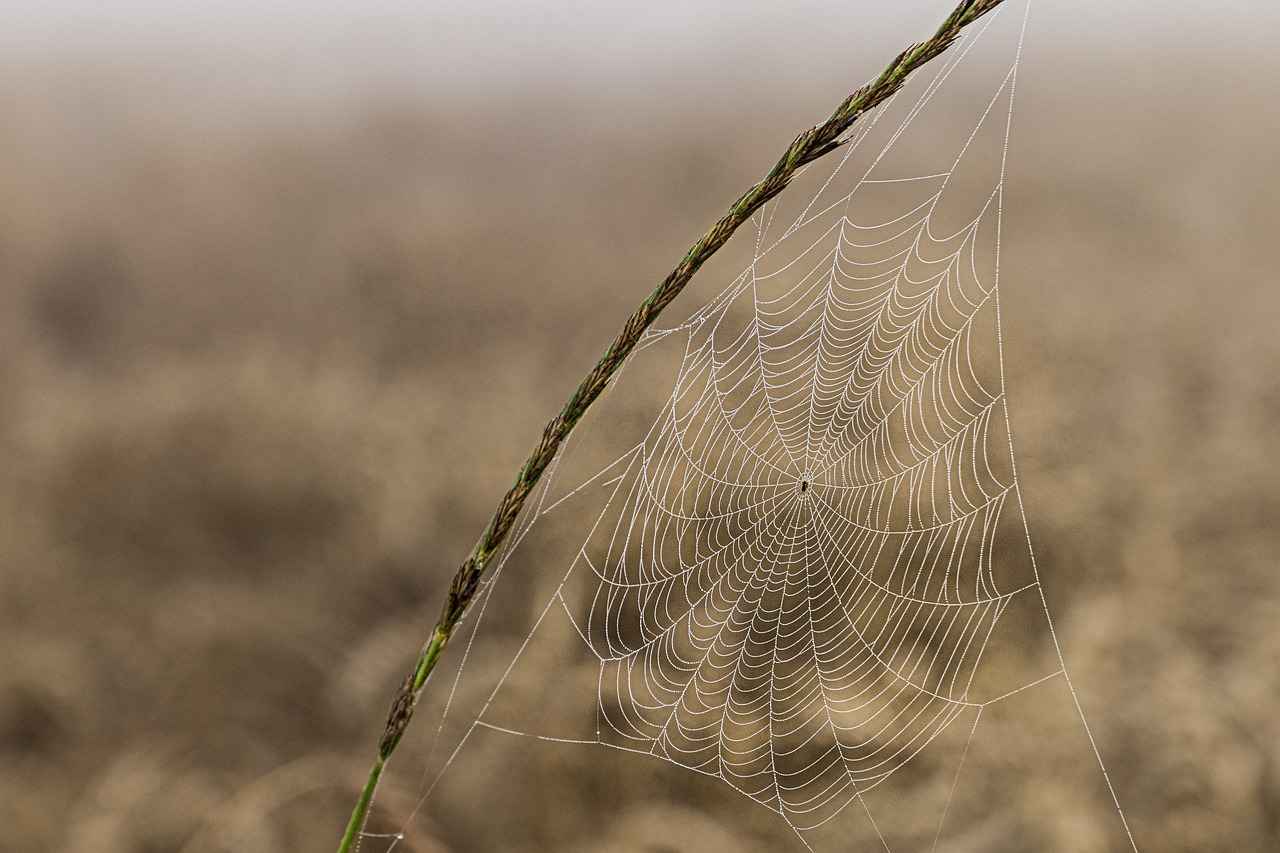
Setting Up the Perfect Habitat
Creating an ideal living environment is crucial for the health and well-being of jumping spiders. These fascinating arachnids require specific conditions to thrive, making habitat setup a vital aspect of their care. Below, we explore essential components for establishing a suitable habitat, including tank size, substrate, temperature, and more.
Tank Size: Finding the Right Space
When selecting a tank for your jumping spider, size matters. A minimum enclosure size of 5 to 10 gallons is recommended for most species, allowing ample space for movement and exploration. Jumping spiders are active and curious, so a larger tank provides them with the opportunity to exhibit natural behaviors. Consider the following factors when choosing the right tank:
- Height vs. Width: Jumping spiders enjoy climbing, so a taller enclosure with adequate width is ideal. This allows them to explore vertical spaces.
- Ventilation: Proper airflow is essential to prevent mold and maintain humidity levels. Look for tanks with mesh lids or ventilation holes.
- Accessibility: Ensure the tank has easy access for feeding and maintenance. A front-opening enclosure can be convenient for regular care.
Substrate: Creating a Comfortable Base
The substrate you choose plays a significant role in your spider’s habitat. A suitable substrate not only provides a comfortable surface but also aids in moisture retention and mimics the spider’s natural environment. Here are some popular substrate options:
- Coconut Fiber: This is an excellent choice due to its moisture-retaining properties and natural appearance. It allows for burrowing and is easy to clean.
- Potting Soil: Organic potting soil can be used, but ensure it is free from fertilizers and chemicals. It provides a natural feel and retains moisture well.
- Peat Moss: Another great option, peat moss offers good moisture retention and a soft texture for your spider.
Temperature and Humidity: Maintaining the Right Conditions
Jumping spiders thrive in specific temperature and humidity ranges. Ideally, maintain a temperature between 70°F and 80°F (21°C to 27°C) during the day, with a slight drop at night. To achieve this, consider the following:
- Heat Sources: Use a heat mat or lamp to provide warmth. Ensure it is placed on one side of the tank to create a temperature gradient.
- Humidity Levels: Aim for a humidity level of around 40% to 60%. Mist the enclosure lightly once or twice a week, but avoid over-saturation.
- Hygrometer: Invest in a hygrometer to monitor humidity levels accurately. This tool helps prevent issues related to excessive dryness or moisture.
Decor and Enrichment: Enhancing Your Spider’s Habitat
Creating an engaging environment for your jumping spider is essential for its mental stimulation. Incorporate various elements to mimic their natural habitat:
- Climbing Structures: Use branches, cork bark, or artificial plants for climbing and hiding. This encourages natural behavior and exercise.
- Hiding Spots: Provide small caves or crevices where your spider can retreat. This helps reduce stress and offers a sense of security.
- Natural Elements: Adding leaves, rocks, or moss not only beautifies the enclosure but also creates a more authentic environment.
In summary, setting up the perfect habitat for your jumping spider involves careful consideration of tank size, substrate, temperature, humidity, and enrichment elements. By providing a well-structured and engaging environment, you ensure your spider remains healthy, active, and happy in its new home.
Choosing the Right Enclosure
When it comes to keeping a jumping spider as a pet, selecting the right enclosure is a crucial step that can significantly impact the spider’s health and overall happiness. Jumping spiders, known for their active and curious nature, require an environment that caters to their specific needs. In this section, we will explore various enclosure options, their benefits, and essential factors to consider when setting up a habitat for these fascinating arachnids.
There are several types of enclosures suitable for jumping spiders, each with its advantages:
- Acrylic Terrariums: These enclosures are lightweight, durable, and offer excellent visibility. They are less prone to shattering compared to glass and can be easily customized with ventilation holes.
- Glass Tanks: Glass tanks provide a classic look and are easy to clean. They retain humidity well, which is beneficial for certain species, but they can be heavy and fragile.
- Plastic Containers: Simple plastic containers can serve as temporary enclosures. They are affordable and lightweight, making them easy to transport. However, they may lack ventilation, so modifications are necessary.
Choosing an appropriate enclosure goes beyond aesthetics; it plays a vital role in the well-being of your jumping spider. Here are some benefits of selecting the right habitat:
- Safety: A well-designed enclosure prevents escapes and protects your spider from potential hazards in your home.
- Comfort: Providing adequate space and structure allows your spider to exhibit natural behaviors such as climbing, jumping, and hiding, which is essential for its mental health.
- Temperature and Humidity Control: The right enclosure helps maintain optimal temperature and humidity levels, crucial for your spider’s metabolism and overall health.
When selecting an enclosure for your jumping spider, consider the following factors:
- Size: The enclosure should be spacious enough to allow your spider to move freely. A minimum size of 5-10 gallons is recommended for adult jumping spiders.
- Ventilation: Good airflow is essential to prevent mold and maintain humidity levels. Look for enclosures with mesh or drilled holes for ventilation.
- Accessibility: Choose an enclosure that allows easy access for feeding and maintenance. Sliding doors or removable lids are ideal for this purpose.
- Decoration: Adding natural elements such as branches, leaves, and hiding spots can enhance your spider’s environment, mimicking its natural habitat.
Once you have chosen the right enclosure, it’s time to set it up. Here’s a simple guide:
1. Clean the enclosure thoroughly before use.2. Add a substrate layer (e.g., coconut fiber or peat moss) to retain humidity.3. Include climbing structures like branches or cork bark.4. Create hiding spots using small boxes or artificial plants.5. Ensure the enclosure is secure and escape-proof.
By carefully considering the enclosure type and setup, you can create a safe and stimulating environment for your jumping spider. This thoughtful approach not only enhances their quality of life but also allows you to enjoy observing their unique behaviors in a well-suited habitat.
Essential Accessories for Your Spider’s Home
Creating a comfortable and stimulating environment for your jumping spider is crucial to its well-being. Jumping spiders are naturally curious and active creatures, requiring an enclosure that mimics their natural habitat. Below, we explore the essential accessories that will enhance your spider’s home, ensuring it thrives and remains engaged.
- Climbing Structures: Jumping spiders are known for their incredible agility and jumping abilities. Including various climbing structures in their enclosure is essential. You can use items such as:
- Branches: Natural branches provide excellent climbing opportunities and help to create a more naturalistic environment.
- Rocks: Smooth rocks can be arranged to create different levels and hiding spots, stimulating your spider’s natural instincts.
- Artificial Plants: These not only add aesthetic value but also provide additional surfaces for climbing and resting.
- Hiding Spots: Just like any pet, jumping spiders need places to hide and feel secure. Including hiding spots helps reduce stress and allows them to exhibit natural behaviors. Consider:
- Cork Bark: This material is excellent for creating natural hiding spots. Its texture and shape encourage exploration.
- Caves or Shelters: Small cave-like structures made from ceramic or plastic can provide safe hiding places.
- Substrate: The substrate is the material that lines the bottom of the enclosure. It should be easy to clean and maintain. Options include:
- Coconut Fiber: This is an excellent choice as it retains moisture and provides a natural look.
- Peat Moss: Another good option, peat moss helps maintain humidity levels, which is beneficial for many spider species.
- Water Source: Hydration is vital for your spider. While jumping spiders do not require standing water, it is essential to provide moisture. You can achieve this by:
- Water Droplets: Mist the enclosure lightly a few times a week to provide droplets that your spider can drink.
- Moist Cotton Ball: Placing a small cotton ball soaked in water can also serve as a hydration source.
- Temperature and Humidity Control: Maintaining the right environment is crucial for the health of your jumping spider. Consider:
- Thermometers and Hygrometers: These tools help you monitor the temperature and humidity levels within the enclosure.
- Heat Mats: If you live in a cooler climate, a heat mat can help maintain the appropriate temperature for your spider.
- Decorative Elements: Adding decorative elements can make the enclosure visually appealing and provide additional surfaces for climbing. Consider:
- Artificial Flowers: These can add color and beauty while offering additional climbing surfaces.
- Decorative Stones: Smooth, non-toxic stones can add variety to the habitat.
By incorporating these essential accessories into your jumping spider’s enclosure, you create a stimulating environment that promotes healthy behavior and reduces stress. A well-designed habitat not only enhances your spider’s quality of life but also allows you to enjoy observing its natural behaviors. Remember that each spider is unique, so feel free to customize the enclosure to cater to your spider’s specific needs and preferences.
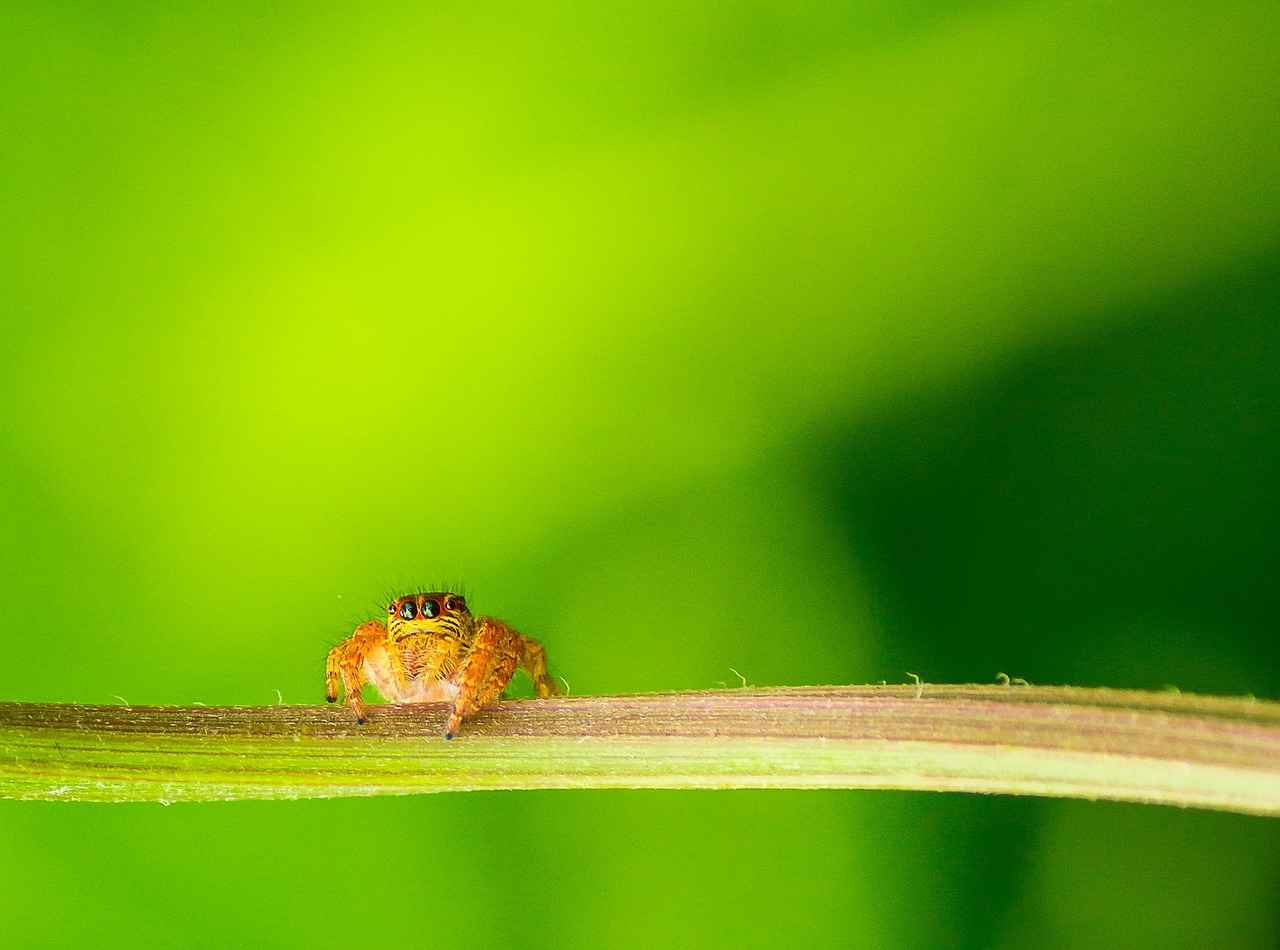
Feeding Your Jumping Spider
Proper nutrition is essential for the health and vitality of your jumping spider. These fascinating arachnids have specific dietary needs that must be met to ensure they thrive in captivity. In this section, we will explore what jumping spiders eat, how often they should be fed, and tips for providing a balanced diet.
What Do Jumping Spiders Eat?
Jumping spiders are primarily carnivorous and thrive on a diet of live prey. Their diet mainly consists of small insects, which provide the necessary nutrients for growth and energy. Some of the most suitable food options include:
- Fruit flies: These tiny insects are perfect for smaller jumping spider species and are widely available in pet stores.
- Crickets: A staple in many arachnid diets, crickets provide essential protein and are easy to find.
- Mealworms: These larvae are nutritious and can be offered to jumping spiders; however, they should not be the sole food source.
- House flies: Larger jumping spiders can handle house flies, which can be caught easily if you have access to them.
Each of these food items offers different nutritional benefits. For instance, crickets are high in protein, while fruit flies are rich in moisture, which is vital for hydration. It’s important to provide a variety of food options to ensure a well-rounded diet for your spider.
Feeding Frequency and Portion Sizes
Understanding how often and how much to feed your jumping spider is crucial. Generally, adult jumping spiders should be fed every 2-3 days, while younger spiders may require daily feedings due to their rapid growth rates. Here are some guidelines to follow:
| Age of Spider | Feeding Frequency | Portion Size |
|---|---|---|
| Juvenile | Daily | 1-2 small insects |
| Adult | Every 2-3 days | 2-3 medium insects |
When serving food, ensure that the insects are appropriately sized for your spider. A good rule of thumb is to offer prey that is no larger than the spider’s body size. This prevents choking and allows for easier hunting.
Additionally, it’s beneficial to gut-load the insects before feeding them to your spider. This means providing the insects with nutritious food before they become a meal, enhancing their nutritional value. For example, feeding crickets a diet rich in vegetables and grains can improve the overall health benefits for your jumping spider.
Tips for Successful Feeding
Feeding your jumping spider can be a rewarding experience. Here are some tips to make the process smoother:
- Observe hunting behavior: Jumping spiders are active hunters. Allow them to hunt their prey rather than offering pre-killed insects, as this stimulates their natural instincts.
- Remove uneaten food: If your spider does not eat the offered insects within a few hours, remove them to prevent stress and to maintain a clean habitat.
- Hydration: While jumping spiders get moisture from their food, it’s a good idea to lightly mist their enclosure occasionally to provide additional hydration.
By following these guidelines and tips, you can ensure that your jumping spider receives the proper nutrition it needs to lead a healthy and active life. Remember, a well-fed spider is a happy spider!
What Do Jumping Spiders Eat?
Jumping spiders, belonging to the family Salticidae, are fascinating creatures that exhibit unique hunting behaviors. Their diet primarily consists of live prey, which plays a crucial role in their health and well-being. Understanding what these arachnids eat is essential for anyone considering them as pets. In this section, we will explore suitable food options, the nutritional value of these insects, and how to provide a balanced diet for your jumping spider.
Jumping spiders are known for their remarkable hunting skills. They actively stalk and pounce on their prey rather than spinning webs. This predatory behavior means that they require a diet rich in protein, which is vital for their growth, energy, and overall health. The following are some suitable food options for jumping spiders:
- Fruit Flies: These tiny insects are an excellent food source for juvenile jumping spiders. They are easy to catch and provide essential nutrients.
- Crickets: Small crickets are a popular choice for adult jumping spiders. They are high in protein and can be offered live or pre-killed.
- Mealworms: Although they are not as active as other prey, mealworms can be a nutritious option. They should be fed sparingly due to their high-fat content.
- Roaches: Small species of roaches, such as Dubia roaches, are also suitable. They are rich in protein and easy to digest.
- Other Insects: Jumping spiders can also consume various other insects, such as moths, ants, and small beetles, depending on availability.
When considering the nutritional value of these food options, it’s essential to note that not all insects are created equal. For instance, crickets and roaches are not only high in protein but also provide essential vitamins and minerals. On the other hand, mealworms, while nutritious, should be offered in moderation due to their higher fat content. A balanced diet will help prevent health issues in jumping spiders, such as obesity or nutritional deficiencies.
In terms of feeding frequency, young jumping spiders may require food every day, while adults can be fed every 2-3 days. It’s important to observe your spider’s behavior; if they seem uninterested in their food, it may be a sign that they are not hungry or that the prey is too large. Portion sizes should be appropriate for the size of your spider; typically, a single insect that is about the same size as the spider is ideal.
In summary, providing a varied diet of live prey is essential for the health of jumping spiders. By understanding their dietary needs and offering appropriate food options, you can ensure that your pet remains healthy and thriving. Regularly assessing the nutritional value of the insects you provide will contribute to a balanced diet, ultimately leading to a happier and healthier jumping spider.
Feeding Frequency and Portion Sizes
Feeding your jumping spider properly is crucial for its health and longevity. Understanding the right feeding frequency and appropriate portion sizes can make a significant difference in your spider’s well-being. In this section, we will delve into the guidelines you need to follow to ensure your spider receives the nutrition it requires.
Jumping spiders have specific dietary needs that can vary based on their age, size, and activity level. Generally, adult jumping spiders should be fed every 2 to 3 days, while younger spiders or juveniles may need to be fed more frequently, about every 1 to 2 days. This increased frequency is essential because younger spiders are growing and require more nutrients to support their development.
- Adult Jumping Spiders: Feed every 2 to 3 days.
- Juvenile Jumping Spiders: Feed every 1 to 2 days.
It’s important to monitor your spider’s behavior and adjust the feeding schedule accordingly. If your spider appears to be more active or is molting, it may require more frequent feedings. Conversely, if your spider is less active, you might consider reducing the frequency to avoid overfeeding.
Portion sizes are equally important when it comes to feeding your jumping spider. The general rule of thumb is to offer prey that is no larger than the spider’s body size. For example, if your spider is approximately 1 inch in size, you should offer prey that is around 1/4 inch to 1/2 inch in length. This ensures that your spider can effectively hunt and consume its food without struggling.
| Spider Size | Recommended Prey Size |
|---|---|
| Less than 1 inch | 1/8 inch to 1/4 inch |
| 1 inch | 1/4 inch to 1/2 inch |
| 1.5 inches | 1/2 inch to 3/4 inch |
| Over 2 inches | 3/4 inch to 1 inch |
Feeding your spider the right portion sizes not only helps in its growth but also prevents health issues related to overfeeding or malnutrition. Always ensure that the prey offered is alive, as jumping spiders prefer to hunt and will be more inclined to eat live insects.
When it comes to selecting prey for your jumping spider, there are various options available. Common choices include:
- Fruit Flies: Ideal for smaller spiders and very nutritious.
- Crickets: A good source of protein and widely available.
- Mealworms: High in protein but should be offered sparingly.
- Flies: Catching house flies is also a fun option for your spider.
Each type of prey has its own nutritional profile, so it’s beneficial to rotate the types of food offered to ensure a balanced diet. Additionally, it is essential to dust the prey with a vitamin supplement occasionally to provide your spider with essential nutrients that may be lacking in its diet.
In summary, understanding how often and how much to feed your jumping spider is essential for its health. By following the guidelines for feeding frequency and portion sizes, you can ensure that your spider thrives in its environment.
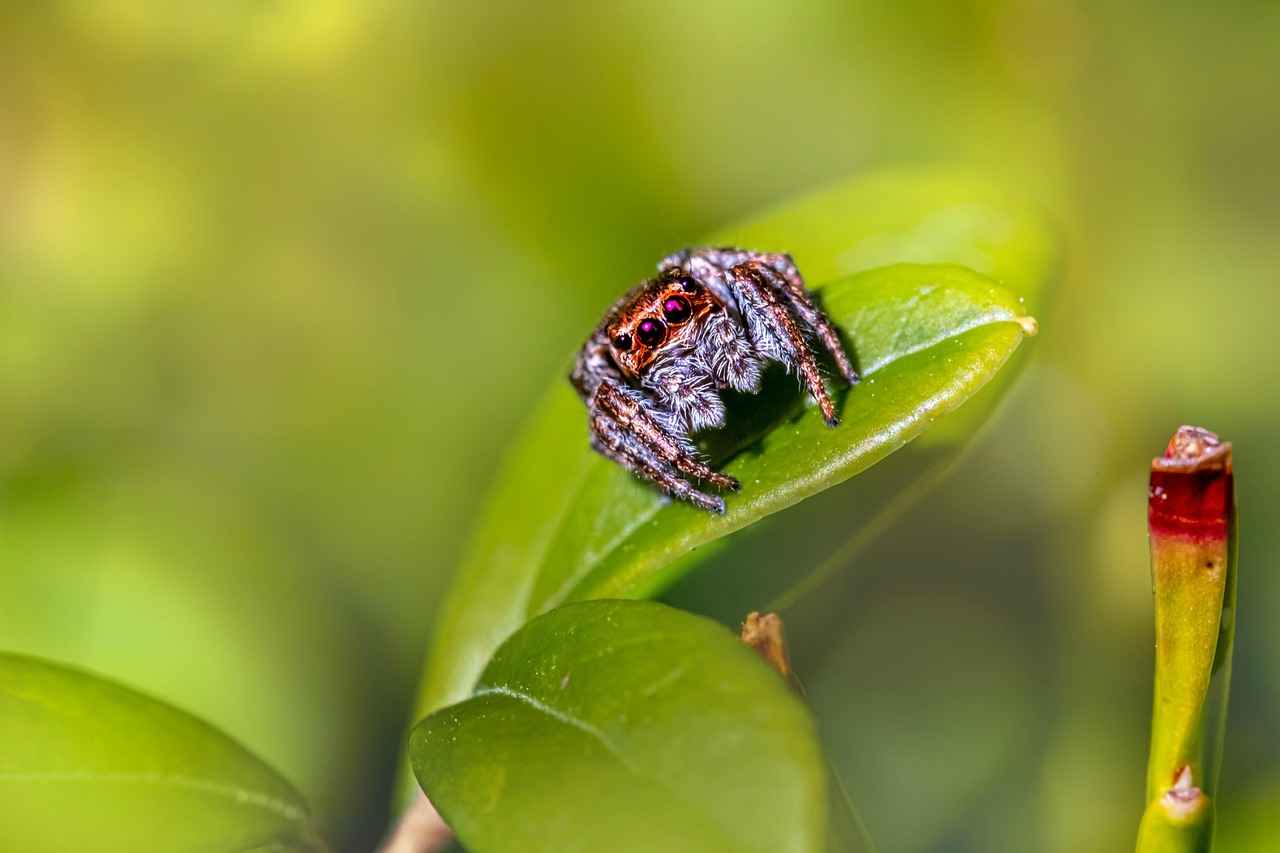
Handling and Interaction
Jumping spiders, with their captivating personalities and unique behaviors, present a fascinating opportunity for pet enthusiasts. While they may not be traditional pets like cats or dogs, they can still be handled with care. This section focuses on the best practices for safely interacting with your jumping spider, ensuring both your safety and the well-being of your eight-legged companion.
Handling a jumping spider requires a gentle approach to avoid stressing the animal. Here are some step-by-step instructions to ensure a safe and positive experience:
- Prepare Your Environment: Choose a calm and quiet area to handle your spider. Avoid loud noises and sudden movements that could startle it.
- Wash Your Hands: Before handling, ensure your hands are clean and free of any chemicals or fragrances that could harm your spider.
- Use a Container: Instead of handling the spider directly, consider using a small container. Gently coax the spider into the container using a soft brush or your finger. This minimizes the risk of dropping or injuring it.
- Gentle Movements: When you do handle your spider, make slow and deliberate movements. Jumping spiders can be skittish, so sudden actions may cause them to jump or flee.
- Limit Handling Time: Keep handling sessions brief to reduce stress. A few minutes is usually sufficient for your spider to get accustomed to your presence.
Establishing trust with your jumping spider is crucial for a healthy relationship. Here are some effective techniques to help your spider feel comfortable around you:
- Consistent Presence: Spend time near your spider’s enclosure daily. This helps it become familiar with your presence and reduces its fear.
- Offer Food from Your Hand: Once your spider is comfortable, try offering food using tweezers. This encourages interaction and helps build a bond.
- Avoid Quick Movements: Always approach your spider slowly and calmly. Quick movements can startle it and create fear.
- Observe Behavior: Pay attention to your spider’s body language. If it seems agitated or tries to escape, give it space and try again later.
Recognizing your jumping spider’s body language can provide insights into its comfort level and mood:
| Behavior | Indication |
|---|---|
| Hiding | Feeling threatened or stressed |
| Jumping | Excitement or a response to perceived danger |
| Staying Still | Feeling safe and secure |
| Web Building | Indicates a comfortable environment |
By understanding these behaviors, you can tailor your interactions to suit your spider’s needs, fostering a positive relationship.
Before handling your jumping spider, it’s essential to create a safe environment. Here are some tips:
- Use a Safe Space: Designate a specific area for handling, free from distractions and potential hazards.
- Soft Surfaces: Handle your spider over soft surfaces like a bed or couch to prevent injuries if it jumps.
- Keep Doors and Windows Closed: Ensure that all exits are secured to prevent your spider from escaping.
By following these guidelines, you can ensure that your interactions with your jumping spider are safe and enjoyable. Building trust and understanding their needs will lead to a rewarding experience for both you and your pet.
How to Safely Handle Your Jumping Spider
When it comes to keeping jumping spiders as pets, understanding how to handle them safely is essential for both the spider’s well-being and your own comfort. These fascinating arachnids can be delicate, and improper handling can lead to stress or injury. Below are detailed, step-by-step instructions to help you manage the process of handling your jumping spider without causing unnecessary stress.
Jumping spiders are known for their curiosity and intelligence, making them unique pets. However, they are also sensitive creatures that require gentle handling. Here are some guidelines to ensure a safe and stress-free experience:
- Prepare Your Environment: Before you attempt to handle your spider, make sure you are in a calm and quiet environment. Avoid loud noises or sudden movements that could startle your spider.
- Wash Your Hands: Clean your hands thoroughly to remove any scents or residues that could confuse or stress your spider. This is particularly important if you have recently handled food or other animals.
- Observe Your Spider: Spend a few moments watching your spider’s behavior. If it seems active and curious, it may be more receptive to handling. If it appears to be hiding or lethargic, it might be best to wait.
- Use a Container: Instead of directly picking up your spider, consider using a small container or cup. Gently coax the spider into the container using a soft brush or your finger. This minimizes direct contact and reduces stress.
- Gently Introduce Your Hand: If you choose to handle your spider directly, slowly extend your hand towards it. Allow the spider to explore your finger at its own pace. Avoid sudden movements that could frighten it.
- Support Its Body: When handling, always support your spider’s body with your fingers. Avoid pinching or squeezing, as this can harm the spider. Instead, let it walk onto your hand if it feels comfortable.
- Limit Handling Time: Keep handling sessions brief, especially at first. A few minutes is usually sufficient. Gradually increase the duration as your spider becomes more accustomed to your presence.
- Return to Habitat: After handling, gently guide your spider back into its enclosure. Avoid dropping it or letting it jump from a height, as this could injure it.
By following these steps, you can create a positive handling experience for both you and your jumping spider. Remember, patience is key. Each spider has its own personality and comfort level, so take the time to build trust.
Establishing a bond with your jumping spider can enhance your interactions and make handling easier. Here are some techniques to help your spider feel more comfortable around you:
- Consistent Presence: Spend time near your spider’s enclosure daily. Your consistent presence will help it become familiar with you.
- Gentle Movements: Always use slow, deliberate movements when interacting with your spider. Quick motions can startle it and create fear.
- Feeding by Hand: Offering food by hand can help build trust. Start by placing food near your spider, and as it becomes more comfortable, try offering food directly from your fingers.
- Respect Its Space: If your spider shows signs of stress, such as retreating or freezing, give it space. Respecting its comfort level is crucial for building trust.
With time and patience, your jumping spider can learn to trust you, making handling a more enjoyable experience for both of you. Always remember that these creatures thrive in a stress-free environment, and your gentle approach will go a long way in ensuring their happiness and health.
Building Trust with Your Spider
Building a strong bond with your jumping spider is essential for both your enjoyment and the well-being of your pet. Trust is the foundation of any healthy relationship, and this is especially true when it comes to handling and interacting with arachnids. In this section, we will explore various techniques that can help your spider feel comfortable and secure in your presence, ultimately enhancing your relationship.
To establish trust, it is crucial to first understand the natural behavior of jumping spiders. These fascinating creatures are known for their curious and inquisitive nature. They often display a range of behaviors that can indicate their comfort level. For instance, a spider that is actively exploring its environment is generally more relaxed than one that remains hidden. By observing these behaviors, you can gauge how your spider is feeling and adjust your interactions accordingly.
One of the most effective ways to build trust with your spider is by ensuring that its habitat is safe and secure. A well-maintained enclosure can significantly reduce stress levels. Here are some tips for creating a comfortable living space:
- Provide Adequate Space: Ensure that your spider has enough room to move around. A cramped enclosure can lead to stress and anxiety.
- Include Hiding Spots: Adding elements like small logs, rocks, or plants can give your spider a sense of security.
- Maintain Proper Temperature and Humidity: Keeping the environment within the recommended temperature and humidity levels is essential for your spider’s health.
When you first bring your jumping spider home, allow it time to acclimate to its new environment before attempting to handle it. This gradual introduction can help your spider feel less threatened. Start by simply sitting near the enclosure and observing your spider. Over time, you can begin to interact with it by gently tapping on the glass or offering food. This process helps to build familiarity and trust.
Once your spider has acclimated, you can begin to handle it. However, it is essential to do so with care:
- Use a Soft Touch: When you reach into the enclosure, do so gently. Sudden movements can startle your spider.
- Let It Come to You: Instead of grabbing your spider, allow it to walk onto your hand. This approach gives your spider a sense of control.
- Limit Handling Time: Keep handling sessions short at first to avoid overwhelming your spider.
Using positive reinforcement can also help build trust. Offer your spider its favorite food as a reward for calm behavior during handling. This technique encourages your spider to associate you with positive experiences, fostering a sense of safety and security.
Building trust takes time, and it is essential to be patient. Each spider has its own personality and may take longer to adjust than others. Respect your spider’s boundaries and allow it to dictate the pace of your interactions. Over time, as your spider becomes more comfortable, you will likely notice it becoming more active and engaging in its environment.
In summary, establishing trust with your jumping spider is a rewarding process that requires understanding, patience, and care. By creating a safe environment, observing behaviors, and using gentle handling techniques, you can foster a bond that enhances both your experience and your spider’s quality of life.
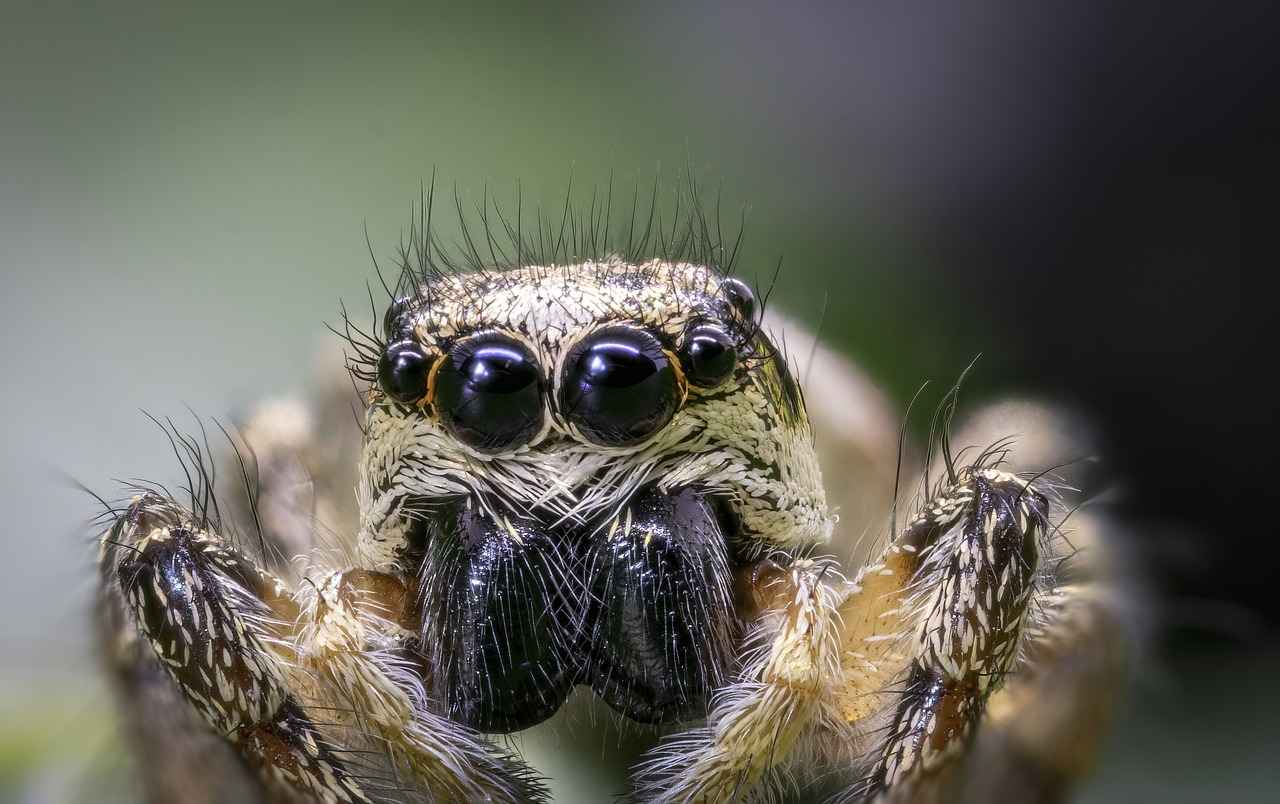
Health and Wellness of Jumping Spiders
Understanding the health and wellness of jumping spiders is essential for any pet owner. These fascinating arachnids, known for their agility and unique behaviors, require specific care to thrive. Recognizing common health issues and implementing preventive care can significantly enhance the quality of life for your jumping spider. This section will explore the signs of illness, preventive care tips, and general wellness practices to keep your pet healthy and thriving.
Being vigilant about your jumping spider’s health is crucial. Early detection of health issues can often lead to better outcomes. Here are some common signs of illness to watch for:
- Decreased Activity: If your spider is less active than usual, it may indicate a health problem.
- Changes in Appetite: A sudden decrease or complete loss of appetite can be a warning sign.
- Abnormal Behavior: Look for signs of lethargy or unusual movements that deviate from its normal behavior.
- Molt Issues: Difficulty molting or incomplete molts can signal health concerns.
- Physical Changes: Any visible signs of distress, such as discoloration or abnormalities in the body, should prompt further investigation.
Monitoring these signs can help you identify potential health issues before they become severe. If you notice any of these symptoms, it is advisable to consult with a veterinarian experienced in exotic pets.
Preventive care is key to ensuring your jumping spider remains healthy. Here are some practical tips to maintain optimal health:
- Proper Habitat Setup: Ensure that your spider’s enclosure mimics its natural environment. This includes appropriate temperature, humidity, and substrate.
- Regular Cleaning: Keep the enclosure clean to prevent mold and bacteria growth. Regularly remove uneaten food and waste.
- Nutrition: Feed your spider a balanced diet of live prey, such as fruit flies or small crickets. Ensure the food is appropriately sized and fresh.
- Hydration: Provide a shallow water source for hydration. Mist the enclosure occasionally to maintain humidity levels.
- Monitoring Health: Regularly observe your spider for any changes in behavior or appearance. This proactive approach can help catch health issues early.
Incorporating these preventive measures into your care routine can significantly enhance your jumping spider’s overall health and longevity.
Beyond recognizing signs of illness and preventive care, general wellness practices can contribute to your spider’s health:
- Stress Reduction: Minimize stress by handling your spider gently and providing a secure environment.
- Social Interaction: While jumping spiders are solitary, gentle interaction can help them feel more comfortable around you.
- Regular Monitoring: Keep a health log to track any changes in behavior or health over time, which can help identify patterns or issues.
By implementing these practices, you can create a nurturing environment that promotes your jumping spider’s well-being. Remember, the more you understand your pet’s needs, the better you can care for it, ensuring a happy and healthy life for your unique companion.
Recognizing Signs of Illness
Being a pet owner comes with the responsibility of ensuring the health and well-being of your beloved jumping spider. Identifying health problems early can significantly contribute to the longevity and quality of life of your spider. Understanding the common signs of illness and what to look for is crucial for any arachnid enthusiast.
Jumping spiders, belonging to the family Salticidae, are fascinating creatures known for their unique behaviors and vibrant appearances. However, like any pet, they can experience health issues that require prompt attention. Here are some key signs to watch for:
- Reduced Activity: If your jumping spider suddenly becomes lethargic or spends excessive time hidden away, it may indicate a health problem. A healthy spider is typically active and engages in hunting and exploring.
- Changes in Appetite: A noticeable decrease in feeding can signal illness. If your spider refuses food for more than a couple of days, it’s essential to investigate further.
- Abnormal Webbing: Jumping spiders produce silk for various purposes, including building shelters. If the webbing appears irregular or is absent, it could indicate stress or health issues.
- Physical Changes: Look for signs such as discoloration, swelling, or unusual growths on the body. These physical symptoms can be indicators of infections or other underlying conditions.
- Difficulty Molting: Molting is a natural process for spiders, but if your spider struggles during this phase or fails to molt completely, it could be a sign of health complications.
Monitoring Behavior and Environment
In addition to the physical signs, monitoring your spider’s behavior is vital. Changes in behavior, such as increased aggression or hiding more than usual, can indicate stress or illness. Ensure that the habitat is suitable, with appropriate humidity and temperature levels, as environmental factors can significantly affect health.
Common Health Issues
Some common health issues that jumping spiders may face include:
- Parasites: External parasites can affect your spider’s health, leading to weakness and lethargy. Regularly check for signs of mites or other pests.
- Fungal Infections: Fungal infections can manifest as discoloration or unusual growths. Maintaining a clean habitat can help prevent these issues.
- Dehydration: Jumping spiders require a certain level of humidity. Signs of dehydration include shriveled appearance and lethargy.
What to Do If You Recognize Symptoms
If you notice any of the above signs, it’s essential to act quickly. Consult with a veterinarian who specializes in exotic pets or arachnids. They can provide a proper diagnosis and recommend treatment options. Additionally, ensuring that your spider’s habitat is clean and adequately set up can prevent many health issues from arising in the first place.
In conclusion, being vigilant about the health of your jumping spider is crucial. By recognizing the signs of illness early, you can take proactive measures to ensure your pet remains healthy and vibrant. Regular observation, proper care, and timely veterinary intervention can make all the difference in your spider’s life.
Preventive Care Tips
Maintaining the health of your jumping spider is essential for ensuring a long and vibrant life. Just like any pet, these fascinating arachnids require specific care and attention to thrive. Below are some practical tips that can help you keep your jumping spider in optimal condition.
- Regular Habitat Maintenance: Keeping the enclosure clean is paramount. Remove uneaten food and waste regularly to prevent mold and bacteria buildup. A thorough cleaning of the habitat should be done every few weeks, using a gentle, non-toxic cleaner to ensure a safe environment.
- Humidity and Temperature Control: Jumping spiders thrive in specific humidity and temperature ranges. Generally, maintaining a humidity level of around 40-60% and a temperature between 70°F and 80°F is ideal. Use a hygrometer to monitor humidity levels and adjust as necessary, perhaps by misting the enclosure lightly or using a small water dish.
- Appropriate Lighting: Providing a natural light cycle can benefit your spider’s health. Use a low-wattage bulb to simulate daylight, ensuring that your spider has a clear distinction between day and night. Avoid direct sunlight, as it can overheat the enclosure.
- Feeding Schedule: Establish a consistent feeding routine. Young jumping spiders may require feeding every day, while adults can be fed every 2-3 days. Monitor their weight and adjust portion sizes accordingly to prevent obesity.
- Variety in Diet: A balanced diet is crucial. Jumping spiders primarily eat live prey such as fruit flies, crickets, and other small insects. Ensure a varied diet to provide essential nutrients. You can also dust the prey with vitamin supplements occasionally to enhance their nutritional value.
- Monitor Behavior: Regularly observe your spider’s behavior. Changes such as lethargy, lack of appetite, or unusual webbing can indicate health issues. Early detection of these signs can lead to timely interventions.
- Hydration: Ensure your spider has access to water. While they get most of their moisture from their food, a small, shallow dish of water can be beneficial, especially during dry periods. Be cautious to avoid drowning hazards.
- Provide Hiding Spots: Jumping spiders feel secure when they have places to hide. Incorporate natural decorations like small plants, rocks, or artificial structures that mimic their natural habitat. This will reduce stress and encourage natural behaviors.
By implementing these preventive care tips, you can significantly enhance the quality of life for your jumping spider. Regular monitoring and maintenance will not only keep your pet healthy but also allow you to enjoy the fascinating behaviors these spiders exhibit. Remember, a happy spider is an active and engaging companion!
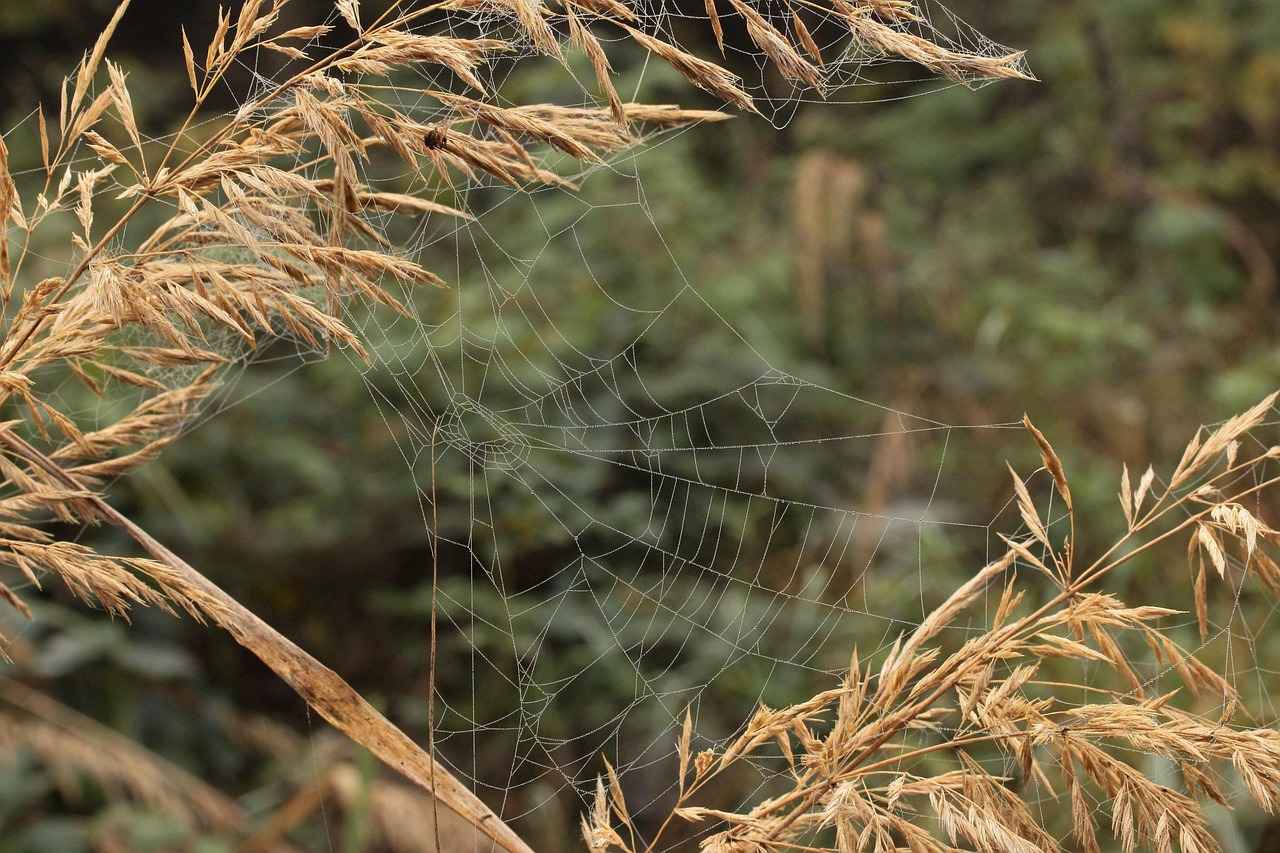
The Cost of Owning a Jumping Spider
Before diving into the world of jumping spiders, it’s crucial to understand the financial commitment involved in caring for these fascinating creatures. While they may seem like an inexpensive pet option at first glance, various costs can add up over time. This section will break down the initial purchase price, ongoing care expenses, and other financial considerations to ensure potential owners are fully informed.
The initial cost of acquiring a jumping spider can vary significantly based on several factors, including species, age, and where you buy it. On average, a jumping spider can range from $10 to $50. Here’s a more detailed breakdown:
| Species | Average Price | Notes |
|---|---|---|
| Phidippus audax | $20 – $30 | Commonly available and easy to care for. |
| Salticus scenicus | $15 – $25 | Striking appearance, popular among enthusiasts. |
| Other Species | $10 – $50 | Prices may vary based on rarity and demand. |
When purchasing a jumping spider, consider buying from reputable breeders or pet stores that specialize in arachnids. This ensures that you’re getting a healthy spider and can often provide valuable care information.
In addition to the initial purchase price, ongoing care expenses are essential to consider. These costs can include:
- Food: Jumping spiders primarily eat live prey, such as fruit flies and crickets. Expect to spend around $5 to $15 per month on food, depending on how many spiders you own and their dietary needs.
- Habitat Maintenance: Setting up a suitable habitat is crucial. The cost of the enclosure, substrate, and plants can range from $30 to $100. Additionally, replacing substrate and cleaning supplies may add $10 to $20 monthly.
- Heating and Lighting: If you live in a cooler climate, you may need to invest in heating equipment. This could add an initial cost of $20 to $50, plus ongoing electricity costs.
- Health Care: Although jumping spiders are generally low-maintenance, occasional health issues may arise. Budgeting $10 to $30 for vet visits or treatments is wise.
Overall, the ongoing care expenses for a jumping spider can range from $50 to $100 per month, depending on your specific setup and the number of spiders you keep. This adds to the overall cost of ownership, making it essential to plan your budget accordingly.
When calculating the cost of owning a jumping spider, it’s also vital to consider the potential for unexpected expenses. For example, if your spider requires medical attention or if you need to replace equipment, these costs can add up quickly. Here are a few tips to manage your budget effectively:
- Research: Before purchasing, research the specific needs of the species you are interested in. This will help you prepare for any unique care requirements.
- Emergency Fund: Set aside a small emergency fund for unexpected veterinary costs or habitat repairs.
- Bulk Buying: Consider buying food in bulk or growing your own feeder insects to save money in the long run.
In conclusion, while jumping spiders can be a rewarding pet choice, potential owners should be prepared for the various costs associated with their care. Understanding both the initial purchase price and ongoing expenses will help ensure a successful and enjoyable experience with these unique arachnids.
Initial Purchase Price
When considering the purchase of a jumping spider, one of the first factors to evaluate is the . This cost can fluctuate significantly based on various elements, including species, age, and the seller’s location. Understanding these factors is essential for potential owners to budget accordingly and ensure they are making an informed decision.
The price of a jumping spider can vary widely, typically ranging from $10 to $50 or more. Here are the key factors that influence this price:
- Species: Different species of jumping spiders have varying price points. For instance, common species like Phidippus audax may be less expensive, while rarer species can command higher prices.
- Age and Size: Juvenile spiders are often cheaper than adults. However, adult spiders may be more desirable for those looking for a pet ready for handling and interaction.
- Seller Type: Purchasing from a reputable breeder may incur a higher cost compared to buying from a local pet store or online retailer. Breeders often provide better care and health guarantees.
- Location: Prices can also vary by region. Urban areas may have higher prices due to demand and availability, while rural areas might offer lower prices.
Jumping spiders belong to a diverse family, and their prices can reflect their uniqueness. For example:
| Species | Average Price Range | Characteristics |
|---|---|---|
| Phidippus audax | $10 – $20 | Bold and curious, known for their striking appearance. |
| Salticus scenicus | $15 – $30 | Recognizable for its zebra-like stripes and playful behavior. |
| Hyllus diardi | $30 – $50 | Famous for its large size and vibrant coloration. |
When purchasing a jumping spider, it is crucial to consider where you buy it. Here are some recommended options:
- Local Pet Stores: These often carry common species and allow for direct interaction before purchase.
- Online Retailers: Websites specializing in exotic pets may offer a wider selection, including rare species, but ensure they have good reviews.
- Breeders: Buying from a breeder can ensure healthier spiders, as they are often more knowledgeable about specific care needs.
While the initial purchase price is an important factor, potential owners should also consider additional costs associated with keeping a jumping spider. These can include:
- Habitat Setup: Enclosures, substrates, and decorations can range from $50 to $100 depending on the complexity.
- Food: Regular feeding of live prey can cost around $10 to $20 monthly.
- Health Care: Occasional veterinary visits or treatments may be necessary, adding to overall costs.
By understanding the various factors influencing the initial purchase price and considering ongoing expenses, prospective owners can make a well-informed decision about bringing a jumping spider into their home.
Ongoing Care Expenses
When considering the ownership of a jumping spider, it’s crucial to factor in not only the initial purchase price but also the ongoing care expenses that will arise. These costs can vary significantly based on your specific needs and preferences, but understanding them is essential for responsible pet ownership.
Jumping spiders, while relatively low-maintenance compared to other pets, still require a consistent investment in care. Below, we outline the key ongoing expenses you should anticipate:
| Expense Type | Estimated Cost (Monthly) | Description |
|---|---|---|
| Food | $5 – $15 | Live insects such as crickets, fruit flies, and mealworms. |
| Habitat Maintenance | $10 – $20 | Replacement of substrate, cleaning supplies, and decor. |
| Utilities | $5 – $10 | Electricity for heating lamps or other equipment. |
| Veterinary Care | $0 – $20 | Annual check-ups or treatments for health issues. |
- Food: Jumping spiders primarily consume live prey, which can be sourced from pet stores or online retailers. A monthly budget of $5 to $15 will ensure a steady supply of nutritious insects.
- Habitat Maintenance: Keeping your spider’s enclosure clean and comfortable is vital. Expect to spend around $10 to $20 monthly on substrate, cleaning supplies, and occasional decor replacements.
- Utilities: If you use heating equipment to maintain the appropriate temperature for your spider, factor in about $5 to $10 for electricity costs.
- Veterinary Care: While jumping spiders generally do not require frequent veterinary visits, setting aside a small budget for potential health issues is wise. This could range from $0 to $20 annually, depending on the spider’s health.
In addition to these recurring costs, it’s important to consider unexpected expenses that may arise. For instance, if your spider becomes ill or if the enclosure needs significant repairs, having a financial buffer can make a significant difference.
Moreover, the quality of care you provide directly impacts the health and longevity of your jumping spider. Investing in high-quality food, proper habitat conditions, and regular monitoring of your spider’s well-being will enhance its quality of life. As an owner, being proactive about these ongoing expenses not only ensures your spider thrives but also fosters a rewarding relationship between you and your pet.
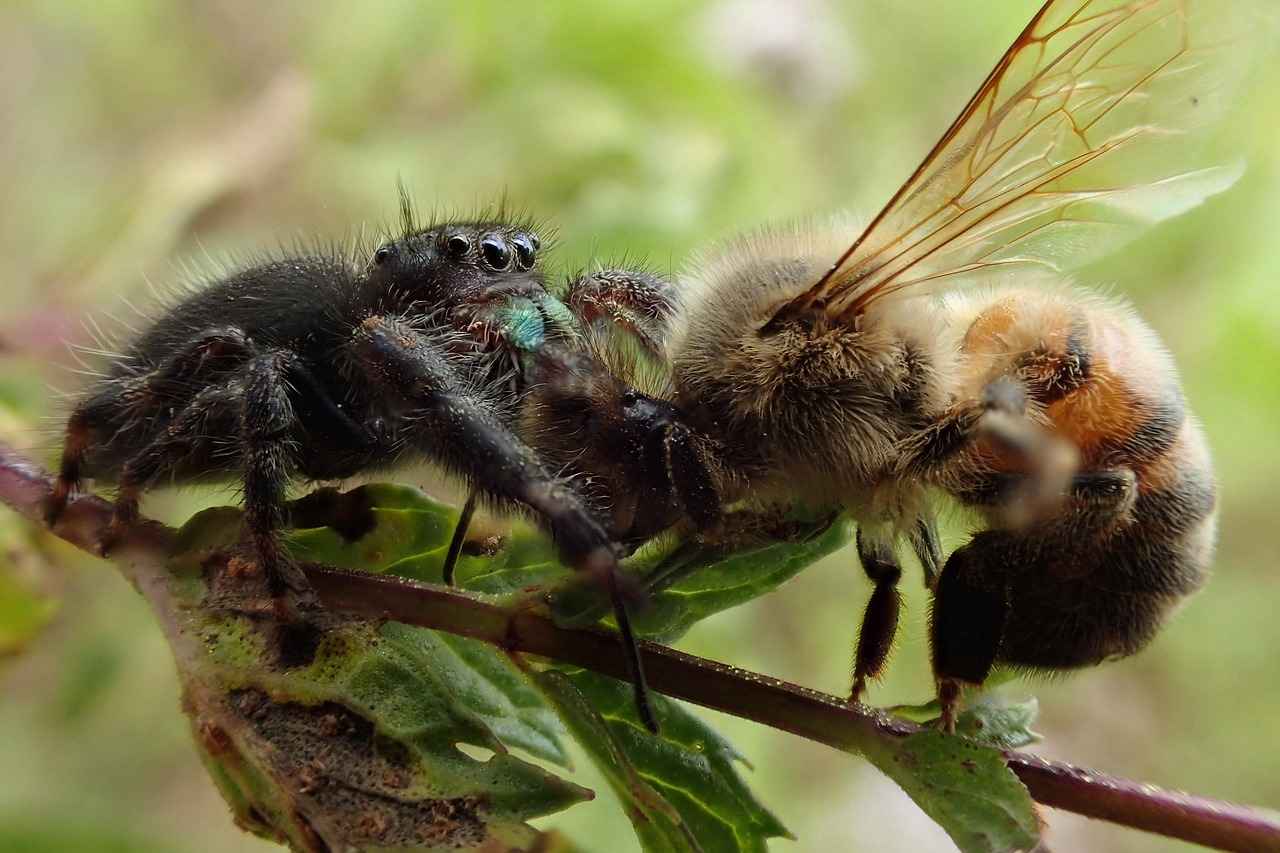
Where to Buy Jumping Spiders
Finding a reputable source for purchasing jumping spiders is crucial for ensuring the health and well-being of these fascinating pets. As their popularity continues to rise, it becomes increasingly important for potential owners to know where to find these arachnids safely and ethically. This section provides insights into various purchasing options, helping you make an informed decision.
When considering where to buy jumping spiders, you typically have two primary options: local pet stores and online retailers. Each has its own set of advantages and disadvantages that can influence your choice.
Pet Stores
- Pros:
- Ability to see the spider in person before purchasing.
- Opportunity to ask staff questions about care and maintenance.
- Immediate availability without shipping delays.
- Cons:
- Limited selection of species.
- Higher prices due to overhead costs.
- Quality of care may vary between stores.
Online Retailers
- Pros:
- Wider variety of species and morphs available.
- Potentially lower prices due to reduced overhead.
- Access to specialized breeders who may offer healthier specimens.
- Cons:
- Shipping can be risky, especially in extreme weather.
- No opportunity to inspect the spider before purchase.
- Possible delays in delivery.
Choosing the right seller is essential for a successful purchase. Here are key factors to consider:
- Experience and Reputation: Look for sellers who have been in the business for several years and have positive reviews from previous customers. Online platforms often feature ratings and testimonials that can help gauge a seller’s trustworthiness.
- Health Guarantees: A reputable seller should provide health guarantees for their spiders, ensuring that you receive a healthy specimen. This can include a return policy if the spider arrives sick or injured.
- Transparency: Good sellers are open about their breeding practices and care routines. They should be willing to answer any questions you have about the spider’s diet, habitat, and health.
- Ethical Practices: Ensure that the seller sources their spiders ethically, avoiding those who capture them from the wild. Ethical breeders prioritize the well-being of their animals and contribute to conservation efforts.
In conclusion, whether you choose to buy your jumping spider from a local pet store or an online retailer, doing thorough research is vital. By considering the advantages and disadvantages of each option and ensuring that you select a reputable seller, you can set yourself up for success as a jumping spider owner. Remember, these unique pets deserve the best care and a safe environment to thrive.
Pet Stores vs. Online Retailers
When it comes to acquiring a jumping spider, potential pet owners often face a significant decision: should they purchase from a local pet store or opt for an online retailer? Each option has its own advantages and disadvantages, making it essential to weigh the pros and cons carefully. This section will provide a comprehensive comparison to assist you in making an informed choice.
Local pet stores offer the advantage of immediacy. You can physically see the jumping spiders before purchasing, ensuring that they are healthy and well-cared for. Additionally, local stores often provide the opportunity to ask questions directly to knowledgeable staff, who can offer valuable insights into the care and behavior of these arachnids.
- Pros:
- Immediate Availability: You can take your new pet home the same day.
- Physical Inspection: Assess the health and condition of the spider before buying.
- Expert Guidance: Staff can provide care tips and answer your questions.
- Cons:
- Limited Selection: Local stores may not carry a wide variety of species.
- Higher Prices: The cost may be higher compared to online options.
- Availability Issues: Popular species may be out of stock or unavailable.
Online retailers present a different set of advantages, primarily centered around convenience and a broader selection. With just a few clicks, you can browse various species, read reviews, and often find competitive prices. Additionally, many online retailers specialize in exotic pets, which can lead to more informed shipping practices and proper care during transit.
- Pros:
- Wider Selection: Access to a variety of species and colors not found in local stores.
- Competitive Pricing: Often, online prices can be lower due to reduced overhead.
- Convenience: Shop from the comfort of your home, with the spider delivered to your door.
- Cons:
- Shipping Risks: There may be risks associated with shipping live animals, including stress and potential health issues.
- No Immediate Inspection: You cannot physically inspect the spider before purchase.
- Limited Interaction: You miss out on the personal advice and interaction available at local stores.
Ultimately, the decision between local pet stores and online retailers will depend on your specific needs and preferences. If you value personal interaction and the ability to inspect your pet, a local pet store may be the best choice. However, if you are looking for a wider selection and potentially lower prices, an online retailer could be more suitable. Consider your priorities, and choose the option that aligns best with your expectations for acquiring your new jumping spider.
What to Look for in a Reputable Seller
When it comes to acquiring a jumping spider, finding a reputable seller is a key step in ensuring a successful and satisfying purchase. These fascinating arachnids have gained popularity, but with that popularity comes the need for caution. Below, we explore the essential factors to consider when selecting a source for your jumping spider.
Identifying a trustworthy seller is essential for a successful purchase. Here are some key factors to consider:
- Experience and Expertise: Look for sellers who specialize in jumping spiders or arachnids. Experienced sellers are more likely to provide healthy specimens and valuable care information.
- Health Guarantees: A reputable seller should offer health guarantees for their spiders. This means they stand behind the quality of their animals and are willing to replace or refund if issues arise shortly after purchase.
- Transparency: A good seller should be open about their breeding practices, feeding routines, and any health issues the spiders may have had. Transparency builds trust.
- Customer Reviews: Check for customer testimonials and reviews. Positive feedback from previous buyers can indicate a seller’s reliability and the quality of their spiders.
- Return Policy: Ensure the seller has a clear return policy. This is important in case the spider does not adapt well to its new environment or if you encounter unforeseen issues.
- Quality of Care: Visit the seller’s facility if possible. Observe the conditions in which the spiders are kept. Healthy, well-cared-for spiders are usually a sign of a reputable seller.
- Knowledgeable Staff: The seller should be able to answer your questions about care, feeding, and habitat requirements. Knowledgeable staff can provide valuable insights and support.
Additionally, consider the following aspects:
| Factor | Importance | What to Look For |
|---|---|---|
| Experience | High | Years in business and specialization in jumping spiders |
| Health Guarantees | High | Written guarantees and replacement policies |
| Transparency | Medium | Open discussions about breeding and care |
| Customer Reviews | High | Positive feedback and testimonials |
| Return Policy | Medium | Clear terms for returns or exchanges |
In conclusion, selecting a reputable seller for your jumping spider is crucial for ensuring a positive experience. By focusing on factors such as experience, health guarantees, transparency, and customer reviews, you can make an informed decision. Remember that the goal is not just to purchase a spider but to ensure that it thrives in its new home.





